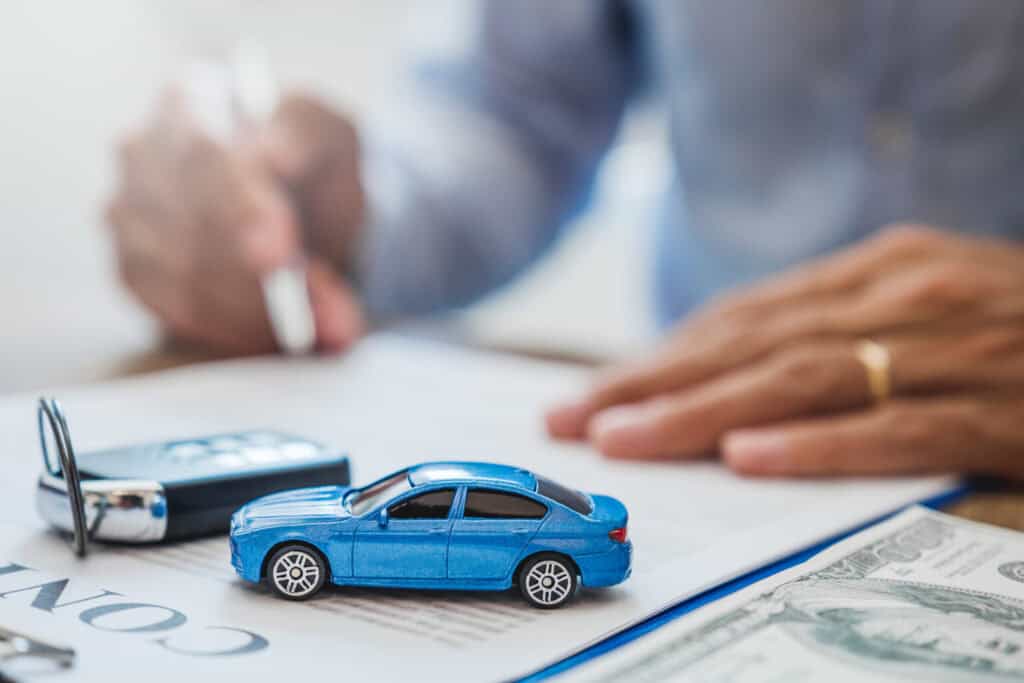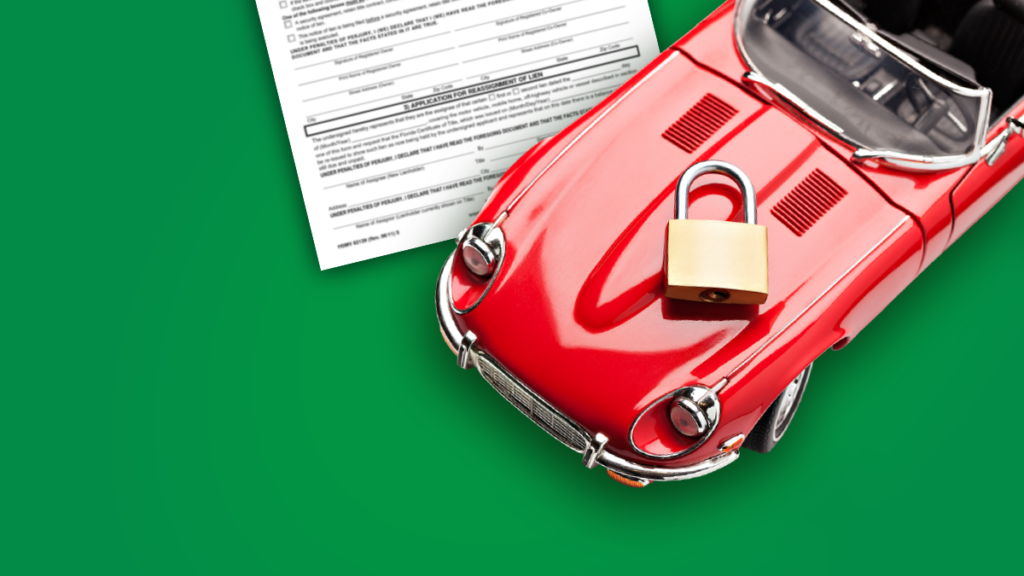Table of Contents
When you take out a car loan, the lender, upon filing a lien with the state, obtains temporary joint ownership of the vehicle until the loan is fully paid off. This status is reflected in the car’s title, where the lender is noted as the lienholder. This type of lien is commonly referred to as a Title Lien.
Once you’ve repaid the loan in full, the lender relinquishes its financial interest in the vehicle. To formalize this, the lender issues a lien release, eliminating the lien, and complete ownership of the car is transferred back to you.
In simple terms, a lien represents a legal right that someone holds on your property, serving as security to ensure you fulfill your financial obligations. In the context of a car, this typically involves the financial institution or lender that provided the auto loan for your vehicle purchase.
If you fail to make your car loan payments before completing the final installment, the lienholder retains the legal right to repossess the vehicle. Subsequently, they can sell the car to cover the outstanding loan balance. Any surplus funds after settling the debt will be returned to you. It’s crucial to avoid having your car repossessed, as it not only results in the loss of your vehicle but also leaves a negative impact on your credit history.

Junking your car when there is a lien on it
If you’re considering junking your car and it has an existing lien, it’s essential to address the lien before proceeding with the disposal. Adding complexity to the situation, salvage yards typically require a clean title in your name, free from any liens, for them to accept the vehicle.
So, what are your options? The most straightforward approach is to settle the outstanding loan before scrapping the car. Depending on the amount owed to the lienholder and the scrap value of your car, you might be able to use the proceeds from the sale to pay off the lien. If the car’s scrap value doesn’t cover the entire loan, you’ll need to cover the shortfall from your own funds, consider obtaining another loan to clear the lien, or potentially charge the remaining balance to a credit card. This ensures a smooth process when junking your car and allows you to meet the requirements set by the salvage yard.
How to Check If a Car Has a Lien?
Determining the lien status of a vehicle can be challenging since liens are considered private banking information. Typically, the DMV is restricted from disclosing this information to anyone other than the titleholder. While obtaining such information may not be straightforward, it is not impossible.
There are two primary methods to check if a vehicle has a lien:
Check the Title:
If you have access to the previous title, examine the front of the document for the lienholder’s name. In cases where a vehicle has a lien, the lienholder will be listed as the owner or one of the owners on the front of the certificate of title.
Inquire with the DMV:
Although the DMV is not permitted to divulge lien information, you might be able to obtain it under certain circumstances. When visiting the DMV, bring all relevant ownership documents, such as a bill of sale or other pertinent paperwork. It is crucial to provide a valid reason for requesting this information to the DMV agent. Additionally, you can submit a motor vehicle record request to your local DMV to obtain prior title information. While the amount of the lien is unlikely to be disclosed, they may furnish you with the name of the lienholder.
Keep in mind that navigating through this process might not be seamless, but with the right documentation and a valid reason, you stand a chance of obtaining the needed information regarding the lien status of a vehicle.
How to Get Rid of a Junk Car With a Lien

selling a car with a lien at a dealership
When you still have an outstanding balance on your car loan, sell my car to dealers is often the most convenient option. Unlike private buyers who cannot purchase a vehicle with an existing lien, dealerships have the capability to do so. After the sale, the dealer typically has a specified period, which varies by state, to settle the outstanding balance with the lienholder.
For sellers, this process is generally swift and straightforward. You visit the dealership, receive an estimate, and leave with cash or, if you’re trading in, potentially a new vehicle. It’s essential to note that dealerships usually offer less than private buyers, so it’s important to manage expectations regarding the sale price.
However, caution is necessary when selling to a dealership. If the trade-in value is less than what you owe, the remaining balance must be addressed, or the negative equity may be rolled into your new car loan. For instance, if you owe $8,000 on your car and the dealer offers $7,500 in trade value, the outstanding $500 doesn’t vanish; it is added to your new car loan. When negative equity is incorporated into the new loan, it results in an increase in your monthly payment.
It’s crucial to be aware of these financial implications when considering selling to a dealership and to carefully assess whether the convenience outweighs the potential costs associated with negative equity in a new loan.
Selling a car with a lien to a private party
Selling a car with an existing lien to an individual involves a distinct process and may entail additional steps. If you opt for a private sale, you’ll have to address your loan situation by either settling it before selling the car or, if your lienholder permits, finding a buyer willing to pay off your auto loan.
While selling your car privately may require more time and effort, the potential financial return is often higher compared to trading it in or selling it to a dealership. Here are a couple of options available for selling your car privately and navigating the title transfer process:
Paying Off the Loan Before Sale:
Ideally, paying off your loan before selling the car simplifies the transaction. This ensures a clean title transfer to the new owner and eliminates any complications associated with the existing lien. While this may require financial planning, it can streamline the private sale process.
Finding a Buyer to Pay Off the Loan:
Some lienholders allow a third party to pay off the remaining loan amount on your behalf. If permissible, you can seek a buyer willing to handle this financial aspect. This can make the transaction smoother, but it’s essential to communicate effectively with the buyer and the lienholder to ensure a seamless transfer of ownership.
Navigating a private sale with an existing lien demands careful consideration of financial arrangements and effective communication with all parties involved. While the process may require more diligence, the potential for a higher sale price often makes it a worthwhile endeavor compared to other selling options.
Pay Off The Lien Yourself
As mentioned earlier, you can get more money by selling your car to an individual instead of a dealership. But if you choose this option, you need to have the money to pay off the loan before selling. This means either paying off the entire loan by yourself or finding a buyer who is willing to pay off the loan.
The simplest way is to pay off the loan on your own if you can. In this case, it’s quite straightforward. You just have to call the people you owe money to (the lienholder) and arrange to give them the money.
Once you’ve paid, the lender will let your state’s motor vehicle agency know, and they will give you a clean title. Having a clean title means you own the car outright, and then you can go ahead and sell it.


